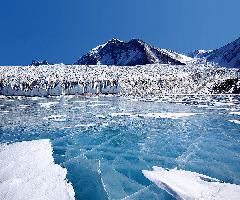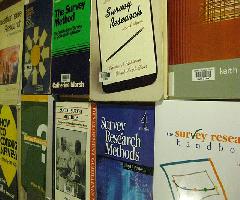In human history, the modern times can be classified as the ‘economic era’ marked by the business activities involving large masses. These business effects all of us in way or another and are the source of our consumer habits. Let us try and have a look as to this essential characteristic of human society evolved over times.
The history of business is in many ways the history of human society and civilization.
The word 'business' can potentially include almost all economic activities undertaken by humans, but it may be more prudent to confine the term to activities that involved production or exchange
of articles or goods. The history of business, like the history of economic activities, can be most easily divided into three phases - business in pre-industrialized world, business during the industrialization, and finally business in the networked world.Business in Pre-Industrialized World
The primary economic activity prior to industrialization, across the globe was agriculture. However, even during those times, there were substantial non-agricultural activities in the form of trade, handicrafts, rural and household industries etc. Trade began as barter between individuals and households, but gradually grew in an organized form, and spread even across countries and continents. Evidences of local as well as international trading are found in all major ancient civilizations including Egypt, China, India and Rome. It involved precious metals, spices, jewels, art pieces and dry fruits.
In the earlier times, manufacturing took place at different levels. In the rural agglomeration, it consisted of weaving, metal crafts and wood based manufactures. In the more urbanized centers, trading activities dominated. Even in those times, there were different classes of people who specialized in these activities only. Specialized trading classes began to thrive in all civilizations of the time. In India, the trader-business class was called “Vaishya” and was one of the four castes of the society, a division that persists to some extent even today.
By third century B.C., international trade had spread across Asia and Europe. Traders used to cross countries across vast distances and products were exchanged. During this period there were major empires across different regions, in Persia, Europe, China and India. The existence of large empires helped trade to prosper.
Business during Industrialization
Business got a new meaning with the advent of machines. Till then, the factors of production were land and labor, both of which were limited. Machines introduced technology, which multiplied the efficiency of labour and allowed for surplus production, far beyond the consumption capacity of the producer. This capacity of surplus production created the incentive for trade and in turn created the modern markets.
Advent of industrial age, a family or a village was mostly self sufficient. They produced what they
required and consumed what they could produce. With machines, the production capacity began to exceed their capacity to consume. From sixteenth century onwards, there was a dramatic surge in scientific developments. Perhaps the most important was the printing machine which allowed the knowledge to spread across Europe, and changed the way man behaved forever. It brought in other changes too, and ushered a new era that began with the renaissance of Europe, and later spread to the rest of the world.The surplus production also gave rise to the need of finding new trading routes and markets. European sailors began to attempt historical journeys to find new ground. One such journey by Christopher Columbus who went in search of a sea route to the East, ended in the discovery of the new world that later came to be called America. For around two centuries, from 1602 A.D. onwards, the Dutch East India Company enjoyed dominance over these routes, becoming the first giant multinational corporation, till it was replaced by the British East India Company. Colonization of Asian countries based on the power of gunpowder and industrial wealth was actually a by-product of international trade which these trading companies had come to dominate across the world.
In the nineteenth century, business and trade reached unprecedented levels, and began to take the centre stage of human social existence. It was in this period that economy became monetized. Money, which used to mean gold and silver, was now held as paper. It was also in this period, that the artificial business identities began to take deep roots in America. The first American industrialists were called Robber Barons. By the end of nineteenth century, some future giants had been established. These included Carnegie Steel Company, founded by Andrew Carnegie in 1870s, J.P Morgan's U.S. Steel and Central Pacific Railroad. By early twentieth century, there were a number of countries in Europe who were competing with each other to dominate world business. They were closely followed by American businesses. In Asia, Japan made significant progress, but the rest of Asia, Africa and Latin America were left far behind.
The business efficiency of certain countries in this age placed them in the 'developed' category, thereby creating a North South division in the global community. In addition, it also created stakes that were worth










